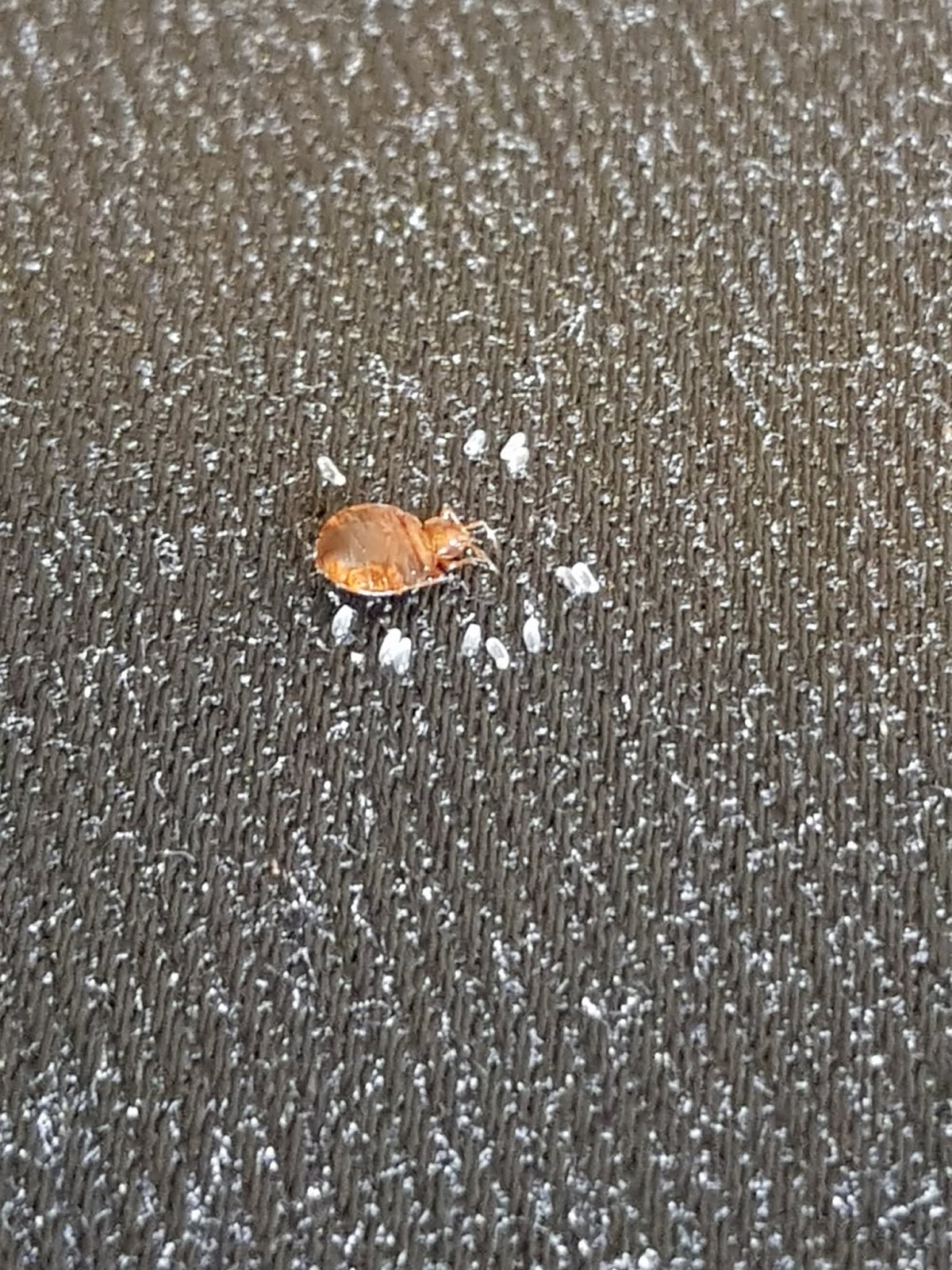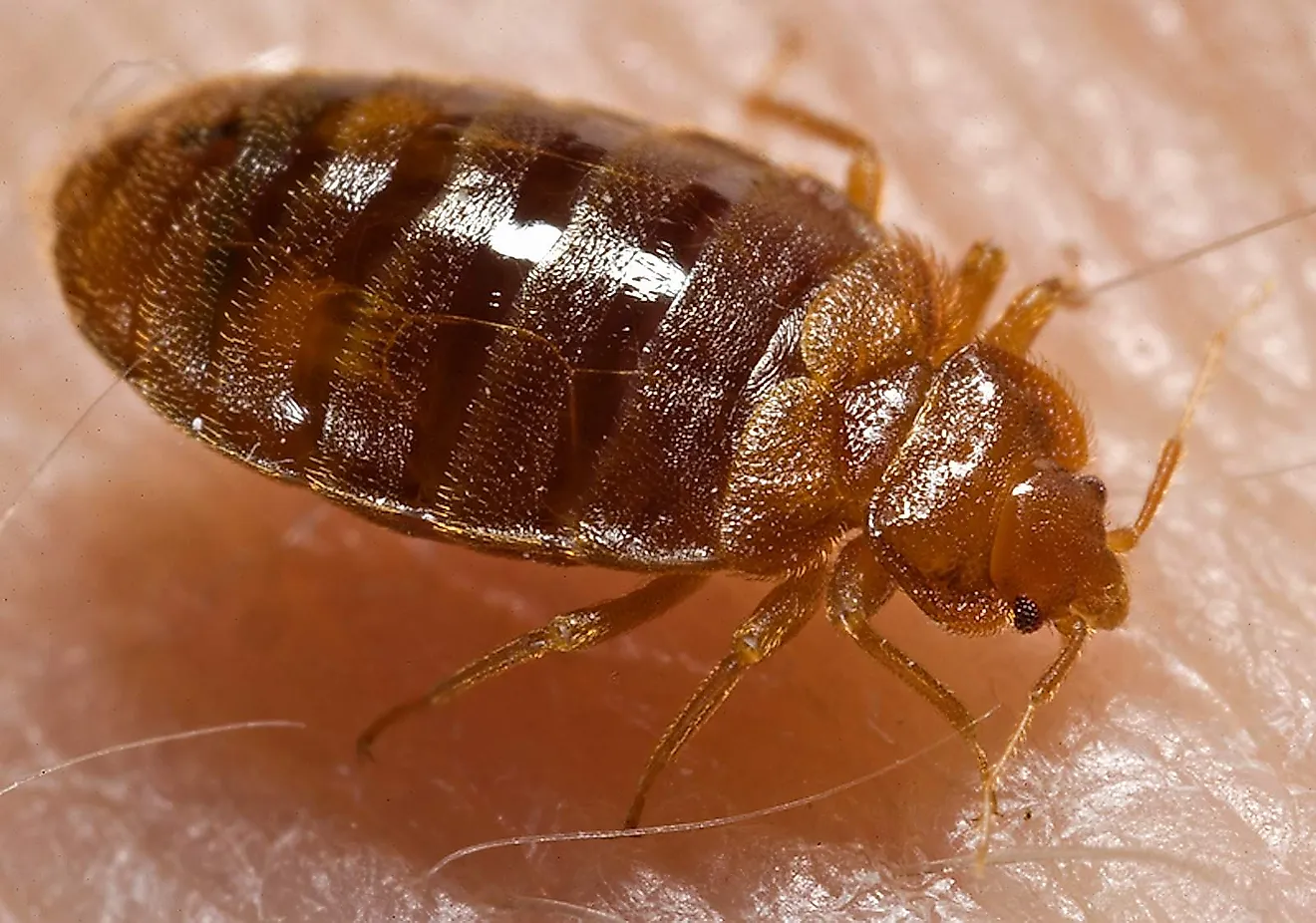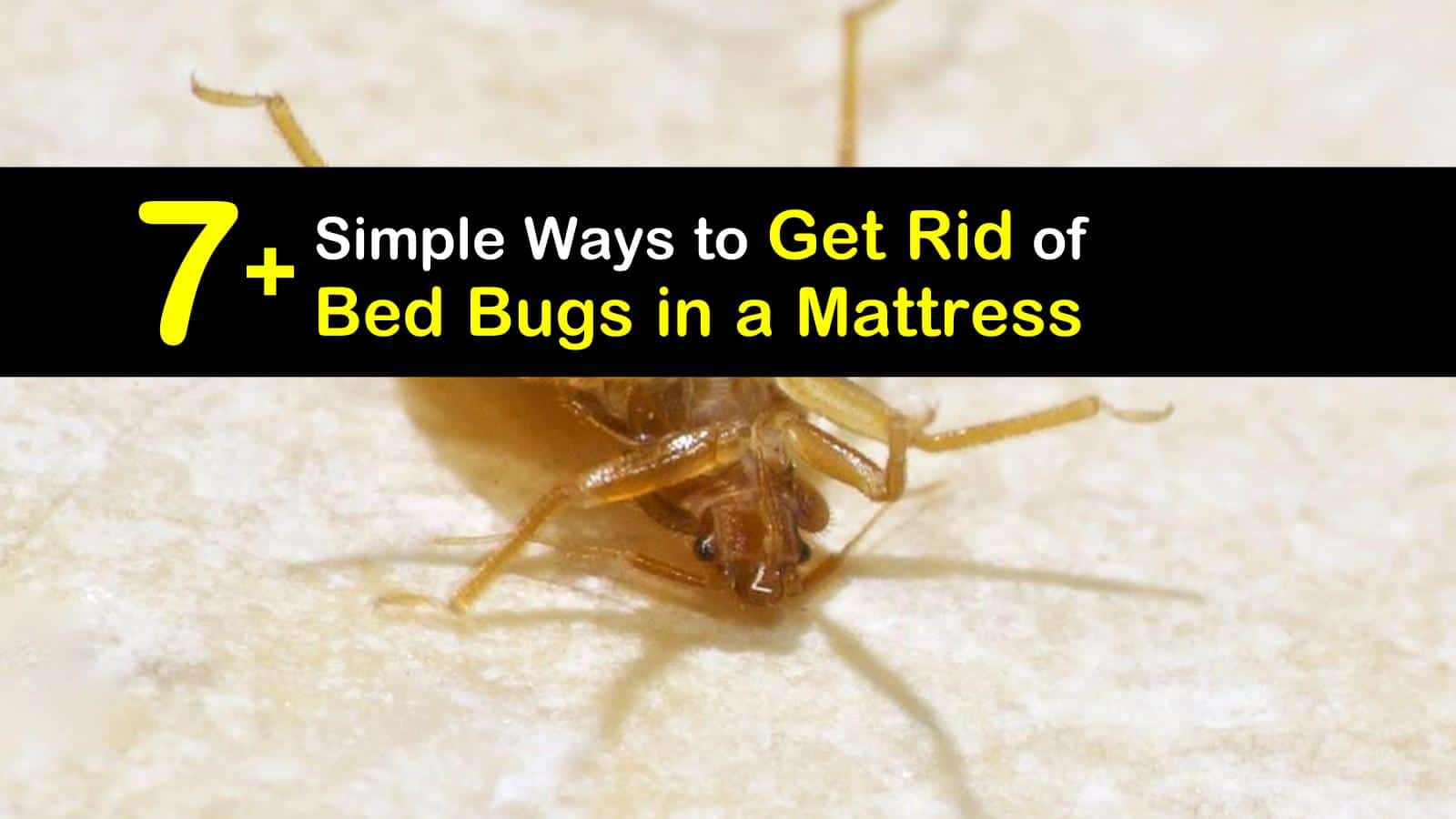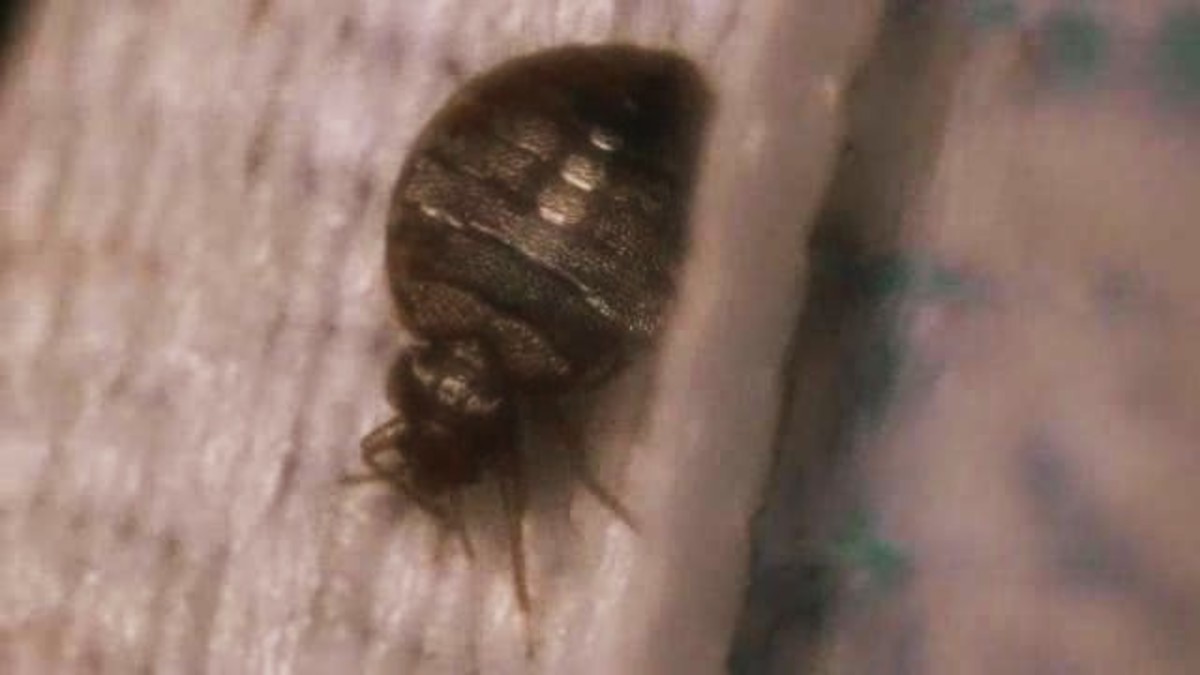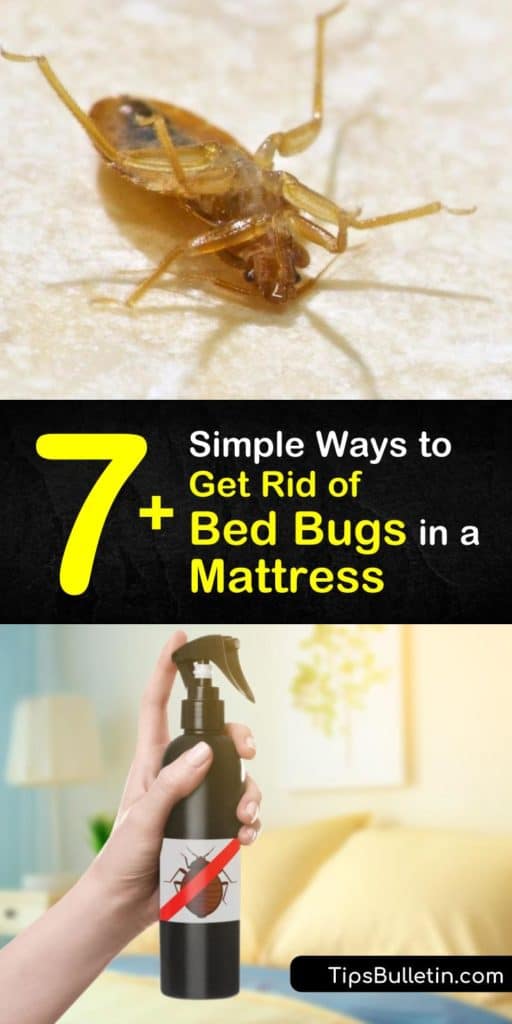1. How to Get Rid of Bed Bugs in a Mattress
If you've ever experienced a bed bug infestation, you know just how frustrating and difficult it can be to get rid of these pesky pests. And when they've made their home inside your mattress, it can feel like an impossible task. But fear not, with the right approach, you can effectively eliminate bed bugs from your mattress and get back to restful nights of sleep.
First and foremost, it's important to understand the life cycle of bed bugs. These tiny insects go through several stages of development, from egg to nymph to adult, and each stage requires a blood meal to survive. This means that bed bugs will remain in your mattress as long as they have a source of food - you. So, the key to getting rid of bed bugs in your mattress is to eliminate their food source.
Start by removing all bedding, including sheets, blankets, and pillowcases. Wash them in hot water and dry them on high heat to kill any bed bugs and their eggs. Then, vacuum your mattress thoroughly, paying special attention to seams, crevices, and tufts where bed bugs like to hide. After vacuuming, use a stiff brush to dislodge any remaining bed bugs and vacuum again.
Next, it's time to treat your mattress. There are several methods you can use, such as steam cleaning, freezing, or using insecticides. Whichever method you choose, make sure to follow the instructions carefully and treat your entire mattress, including the edges and underside. It's also important to treat any nearby furniture or items that may be infested.
After treating your mattress, encase it in a bed bug-proof cover. This will prevent any remaining bed bugs from escaping or new ones from getting in. Make sure the cover is labeled specifically for bed bugs and is designed to completely encase the mattress. Leave the cover on for at least a year to ensure all bed bugs have died.
Finally, continue to monitor your mattress and surrounding areas for any signs of bed bugs. If you see any, repeat the treatment process. It may take several treatments to completely eliminate an infestation, but with diligence and persistence, you can get rid of bed bugs in your mattress for good.
2. Signs of Bed Bugs in a Mattress
Before you can effectively get rid of bed bugs in your mattress, you need to know how to identify them. These tiny insects are reddish-brown in color and about the size of an apple seed. They are most active at night and are attracted to the carbon dioxide we exhale, making our beds the perfect place for them to feed.
Aside from actually seeing bed bugs, there are other signs that can indicate an infestation in your mattress. These include small red or brown stains on your sheets or mattress, which are the blood and fecal matter left behind by bed bugs. You may also notice a musty odor in your bedroom, as bed bugs release pheromones to communicate with each other.
It's important to regularly check your mattress for these signs, especially if you've recently traveled or stayed in a hotel. Bed bugs are excellent hitchhikers and can easily make their way into your home through luggage, clothing, or second-hand furniture.
If you suspect you have bed bugs in your mattress, it's crucial to take action immediately to prevent the infestation from spreading. The longer you wait, the harder it will be to get rid of them.
3. Can Bed Bugs Live Inside Your Mattress?
The short answer is yes, bed bugs can live inside your mattress. In fact, they prefer to stay close to their food source, which is why they often hide in mattresses, box springs, and bed frames. Bed bugs are also known to hide in other areas of the bedroom, such as cracks in walls, baseboards, and furniture.
While bed bugs prefer to stay close to their food source, they can also travel up to 20 feet in search of a blood meal. This means that even if your mattress is bed bug-free, they can still find their way to you from other areas of your home or neighboring apartments.
This is why it's important to thoroughly inspect and treat your entire bedroom, not just your mattress, if you suspect a bed bug infestation. Additionally, take precautions when traveling or bringing in second-hand furniture to prevent bed bugs from entering your home in the first place.
4. How to Check for Bed Bugs in a Mattress
Regularly checking for bed bugs in your mattress can help you catch an infestation early and prevent it from spreading. To effectively check for bed bugs, you'll need a flashlight and a credit card or similar tool to scrape and dislodge any bugs hiding in seams or crevices.
Start by removing all bedding and inspecting the seams, tufts, and edges of your mattress. Look for live bugs, bloodstains, or dark spots, which could indicate bed bug activity. You may also want to use a magnifying glass to get a closer look.
Next, use your credit card to gently scrape along the seams and crevices of your mattress. This will dislodge any hiding bed bugs, making them easier to spot. Don't forget to check the box spring, bed frame, and nearby furniture as well.
If you find any signs of bed bugs, it's important to take immediate action to prevent the infestation from spreading. If you're unsure, you may want to consult a professional pest control company for a thorough inspection.
5. What Do Bed Bugs Look Like in a Mattress?
As mentioned earlier, bed bugs are reddish-brown in color and about the size of an apple seed. They have flat, oval-shaped bodies and six legs, and they are wingless. In their early stages of development, bed bugs are translucent and may appear yellowish or white.
When inspecting your mattress for bed bugs, you may also come across their eggs, which are small and white in color. These are usually found in clusters and may be attached to the fabric or other surfaces in your mattress. If you see any eggs, it's a clear sign of a bed bug infestation.
6. How to Treat a Mattress for Bed Bugs
There are several effective methods for treating a mattress for bed bugs, including steam cleaning, freezing, and using insecticides. Whichever method you choose, make sure to follow the instructions carefully and treat your entire mattress, including the edges and underside.
If you opt for steam cleaning, use a commercial steamer or a home steam cleaner to thoroughly steam your mattress. The high heat will kill any bed bugs and their eggs. Freezing your mattress is also an effective method, as bed bugs cannot survive in extreme temperatures. Simply place your mattress in a freezer for 4-5 days to eliminate any bed bugs.
If you choose to use insecticides, make sure to use a product specifically labeled for bed bugs. These can come in the form of sprays, dusts, or aerosols. Be sure to follow the instructions carefully and treat all areas of your mattress and surrounding furniture.
It's important to note that some treatments may require multiple applications to completely eliminate an infestation. It's also a good idea to use different methods simultaneously, such as steam cleaning and using insecticides, to ensure maximum effectiveness.
7. Where Do Bed Bugs Hide in a Mattress?
Bed bugs are experts at hiding, and they can squeeze into the tiniest of spaces. In a mattress, they may hide in seams, tufts, and crevices, as well as the folds and edges of the fabric. They may also hide in box springs, bed frames, and nearby furniture.
When inspecting for bed bugs, make sure to thoroughly check all of these areas. Don't forget to use a flashlight and a tool to dislodge any hiding bugs. Remember, bed bugs can also hide in other areas of the bedroom, so it's important to treat the entire room to prevent the infestation from spreading.
8. How Long Can Bed Bugs Live in a Mattress?
The lifespan of a bed bug depends on several factors, such as temperature, food availability, and life stage. In general, adult bed bugs can survive for several months without a blood meal, while nymphs can survive for several weeks. However, in favorable conditions, bed bugs can live up to a year or more.
When treating a mattress for bed bugs, it's important to remember that not all of them will die immediately. Eggs may take up to two weeks to hatch, and newly hatched nymphs will need to feed before they can reproduce. This is why it's important to continue monitoring and treating your mattress for several weeks after the initial treatment.
9. How to Prevent Bed Bugs in Your Mattress
The best way to prevent bed bugs in your mattress is to be vigilant and take precautions. When traveling, inspect your hotel room for signs of bed bugs and keep your luggage off the floor and bed. When purchasing second-hand furniture, thoroughly inspect it for any signs of bed bugs before bringing it into your home.
It's also a good idea to regularly vacuum and steam clean your mattress, as well as encase it in a bed bug-proof cover. These covers not only prevent bed bugs from entering or escaping your mattress, but they also make it easier to spot any potential infestations.
10. How to Clean a Mattress Infested with Bed Bugs
If your mattress is infested with bed bugs, it's important to take immediate action to prevent the infestation from spreading. Start by removing all bedding and washing it in hot water. Then, vacuum your mattress thoroughly, using a stiff brush to dislodge any hiding bed bugs.
Next, treat your mattress using one of the methods mentioned earlier, such as steam cleaning or using insecticides. After treatment, encase your mattress in a bed bug-proof cover and leave it on for at least a year to ensure all bed bugs have died.
It's also a good idea to regularly vacuum and steam clean your mattress, even after the infestation has been eliminated. This will help prevent future bed bug infestations and keep your mattress clean and free of allergens.
The Hidden Menace: Bed Bugs Lurking in Your Mattress

The Dangers of Bed Bugs in Your Home
 When it comes to house design, the focus is often on creating a beautiful and functional living space. However, there is one aspect of house design that is often overlooked - the presence of bed bugs. These tiny insects may seem harmless, but they can cause a whole host of problems for homeowners. The most common place for bed bugs to live is inside mattresses, making it essential to address this issue in any house design plan.
When it comes to house design, the focus is often on creating a beautiful and functional living space. However, there is one aspect of house design that is often overlooked - the presence of bed bugs. These tiny insects may seem harmless, but they can cause a whole host of problems for homeowners. The most common place for bed bugs to live is inside mattresses, making it essential to address this issue in any house design plan.
The Life of a Bed Bug
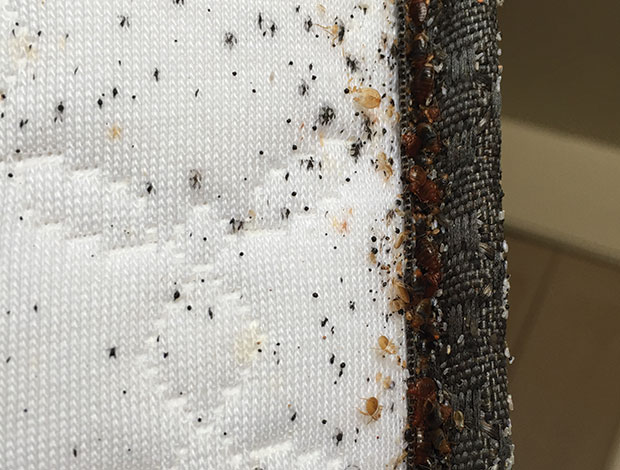 Bed bugs are small, flat, and oval-shaped insects that feed on the blood of humans or animals. They are typically reddish-brown in color and can grow up to 5 millimeters in length. These pests are nocturnal and prefer to hide during the day, making it difficult to spot them. However, their presence can be detected by the small dark spots they leave behind on mattresses and bedding.
Bed bugs are small, flat, and oval-shaped insects that feed on the blood of humans or animals. They are typically reddish-brown in color and can grow up to 5 millimeters in length. These pests are nocturnal and prefer to hide during the day, making it difficult to spot them. However, their presence can be detected by the small dark spots they leave behind on mattresses and bedding.
The Dangers of Bed Bugs in Your Mattress
 Aside from being a nuisance, bed bugs can also pose health risks for homeowners. Their bites can cause skin irritation, itching, and even allergic reactions in some individuals. In severe cases, bed bug infestations can lead to anxiety, insomnia, and other psychological effects. This makes it crucial to address any bed bug issues in your mattress as soon as possible.
Aside from being a nuisance, bed bugs can also pose health risks for homeowners. Their bites can cause skin irritation, itching, and even allergic reactions in some individuals. In severe cases, bed bug infestations can lead to anxiety, insomnia, and other psychological effects. This makes it crucial to address any bed bug issues in your mattress as soon as possible.
Preventing Bed Bugs in Your Mattress
 The best way to prevent bed bugs in your mattress is to take proactive measures in your house design plan. When purchasing a new mattress, it is essential to thoroughly inspect it for any signs of bed bugs before bringing it into your home. Additionally, regularly vacuuming and washing bedding at high temperatures can help eliminate any existing bed bugs.
The best way to prevent bed bugs in your mattress is to take proactive measures in your house design plan. When purchasing a new mattress, it is essential to thoroughly inspect it for any signs of bed bugs before bringing it into your home. Additionally, regularly vacuuming and washing bedding at high temperatures can help eliminate any existing bed bugs.
Dealing with Bed Bugs in Your Mattress
 If you suspect that your mattress has a bed bug infestation, it is crucial to take immediate action. The first step is to hire a professional exterminator who is experienced in dealing with bed bugs. They will be able to properly assess the situation and provide effective treatment options. In some cases, it may be necessary to replace the mattress to completely eliminate the bed bugs.
In Conclusion
, when it comes to house design, it is essential to consider not just the aesthetics but also the safety and well-being of your home. Don't let bed bugs go unnoticed in your mattress, as they can quickly spread throughout your home and cause significant problems. By taking preventative measures and addressing any infestations promptly, you can ensure a comfortable and healthy living space for you and your family.
If you suspect that your mattress has a bed bug infestation, it is crucial to take immediate action. The first step is to hire a professional exterminator who is experienced in dealing with bed bugs. They will be able to properly assess the situation and provide effective treatment options. In some cases, it may be necessary to replace the mattress to completely eliminate the bed bugs.
In Conclusion
, when it comes to house design, it is essential to consider not just the aesthetics but also the safety and well-being of your home. Don't let bed bugs go unnoticed in your mattress, as they can quickly spread throughout your home and cause significant problems. By taking preventative measures and addressing any infestations promptly, you can ensure a comfortable and healthy living space for you and your family.









































